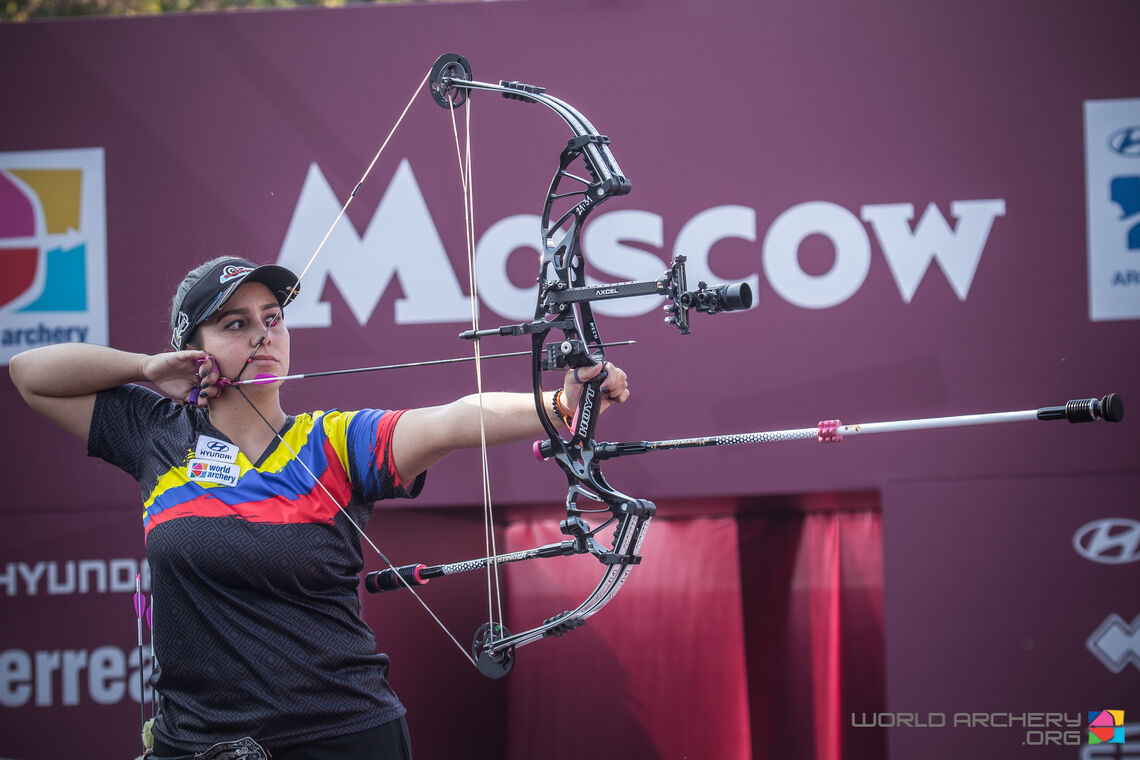
Compound
Compound is the youngest competitive bowstyle in archery.
The compound bow was invented in the 1960s as a more mechanically efficient piece of archery equipment. The design uses a levering system of pulleys and cables, making it faster and decidedly more accurate than other types of bow.
Compound was first included on the programme of the World Archery Championships in 1995. It has been included – on equal footing with the recurve bow – in the Hyundai Archery World Cup since its launch in 2006, and it features on the programme of the World Games as well.
An archer shooting a compound bow pulls the string back to the mechanical stop using a release aid, with the strength required to draw the bow decreasing as the bow is drawn. The archer aims at the target through a magnified scope and activates his release aid to detach it from the string. The energy stored in the bent limbs and taught cables transfers into the arrow, sending it downrange to the target. Drawing a competitive compound bow can require up to 28 kilograms (60 pounds) of force, although at full draw the holding weight can be as little as 6 kilograms (13 pounds), and an arrow shot from a compound bow can travel at speeds of over 350 kph.
Modern compound bows are built using technologically advanced materials, including carbon fibre and aluminium. The equipment is rigorously tested, as compound bows remain under significant tension, even when not in use, and must withstand remarkable forces when shot.
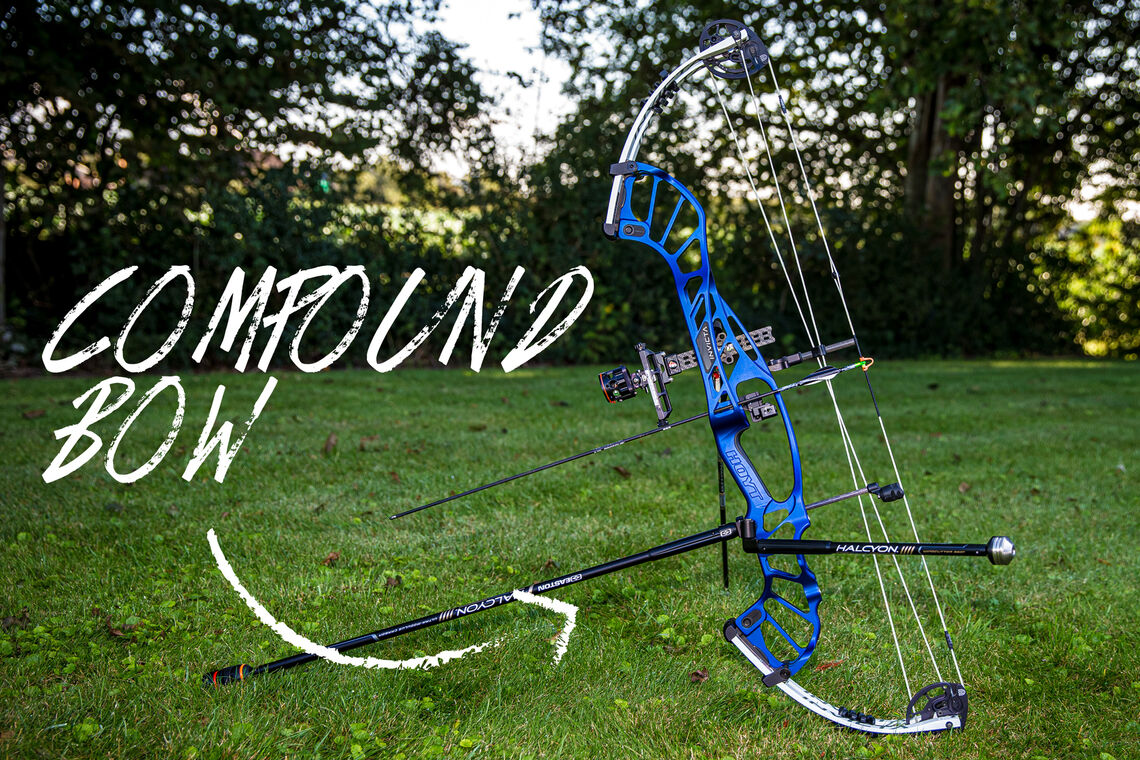
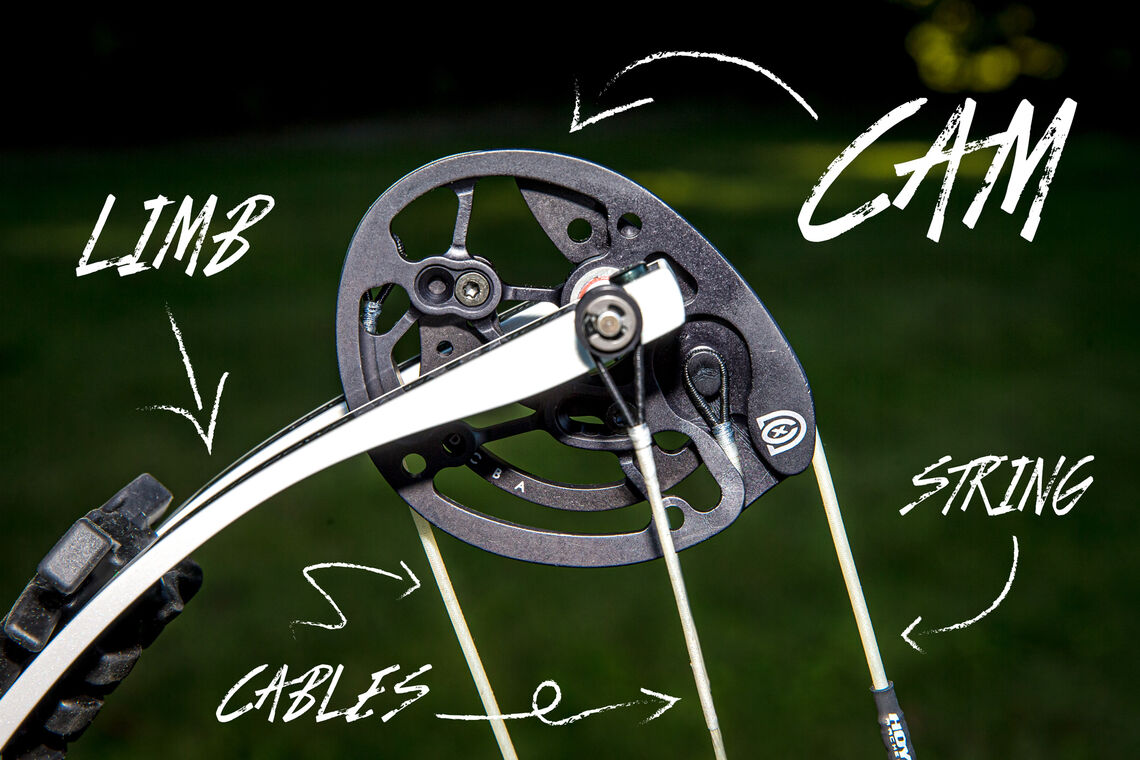
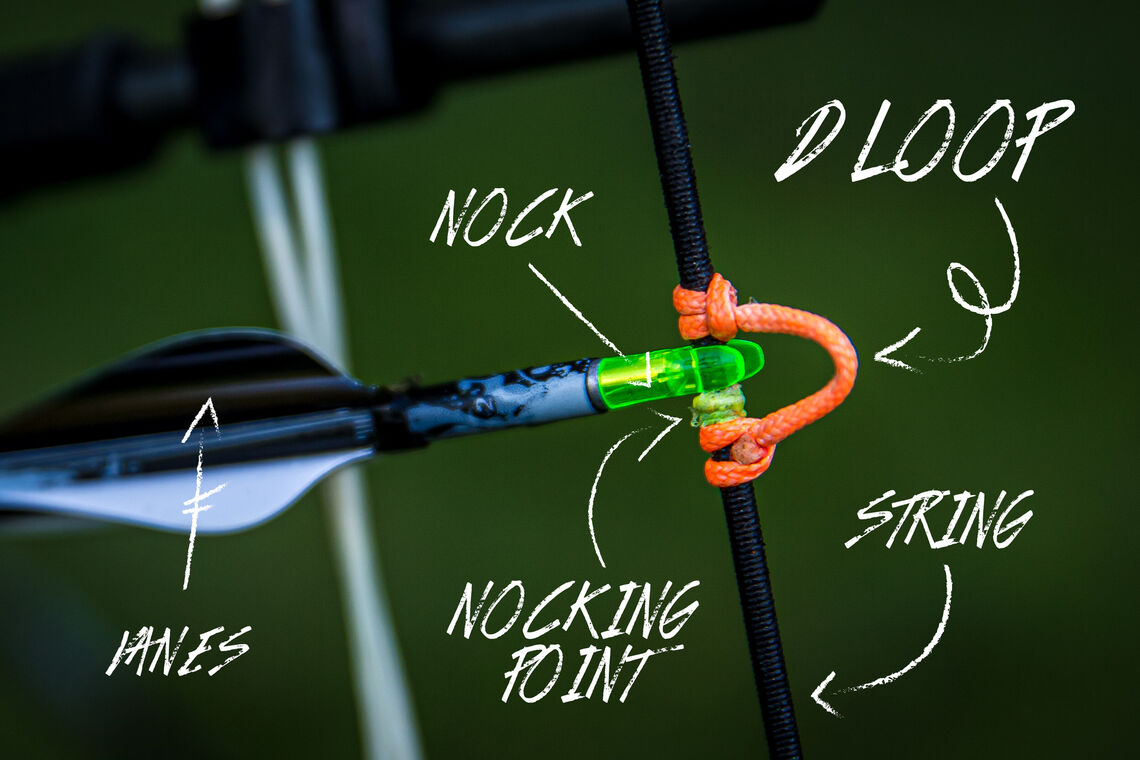
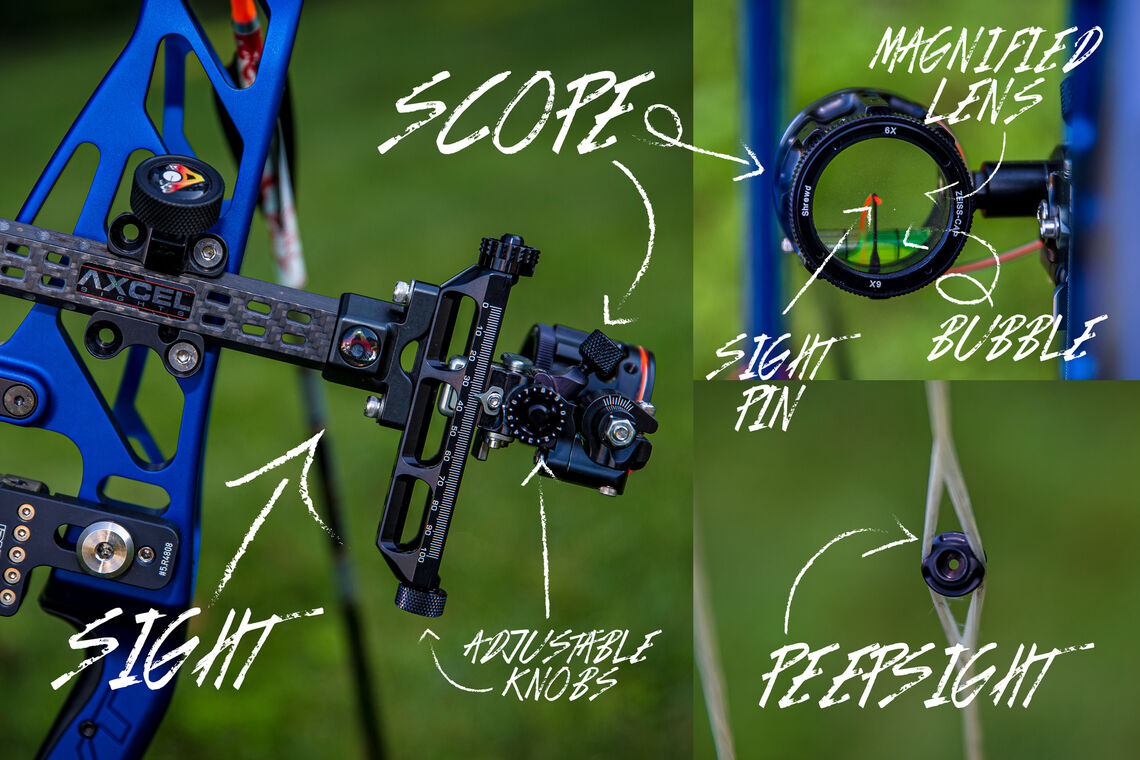
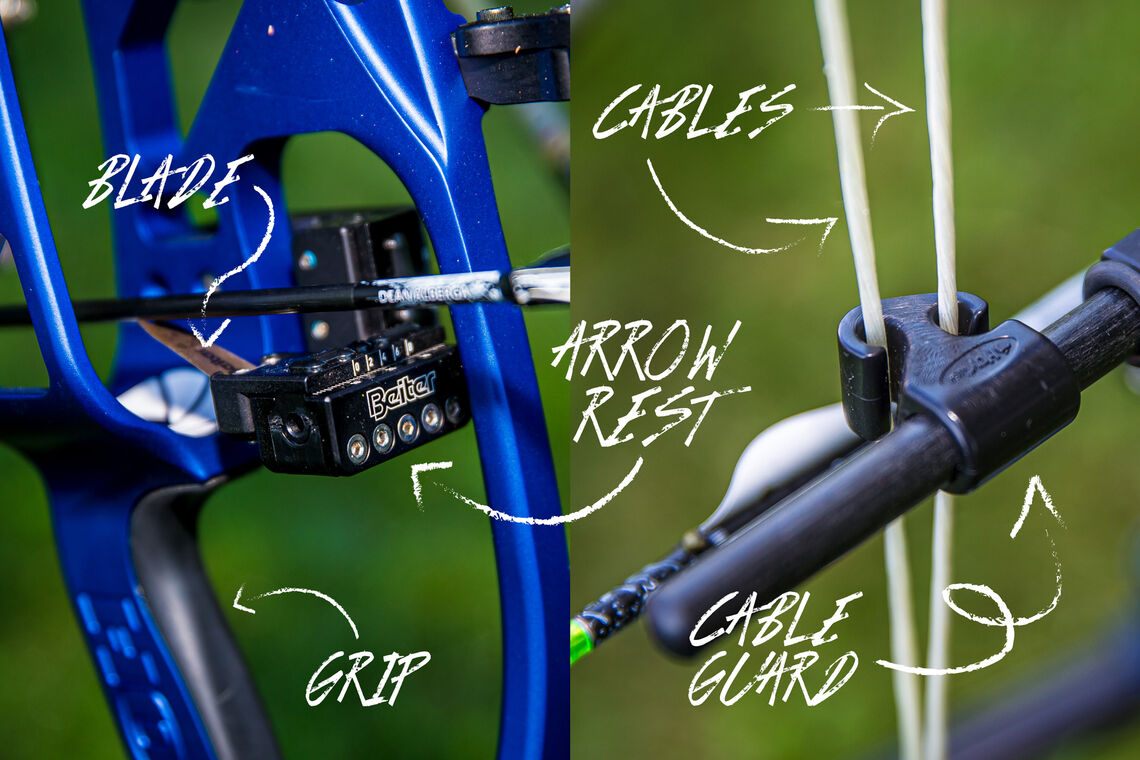
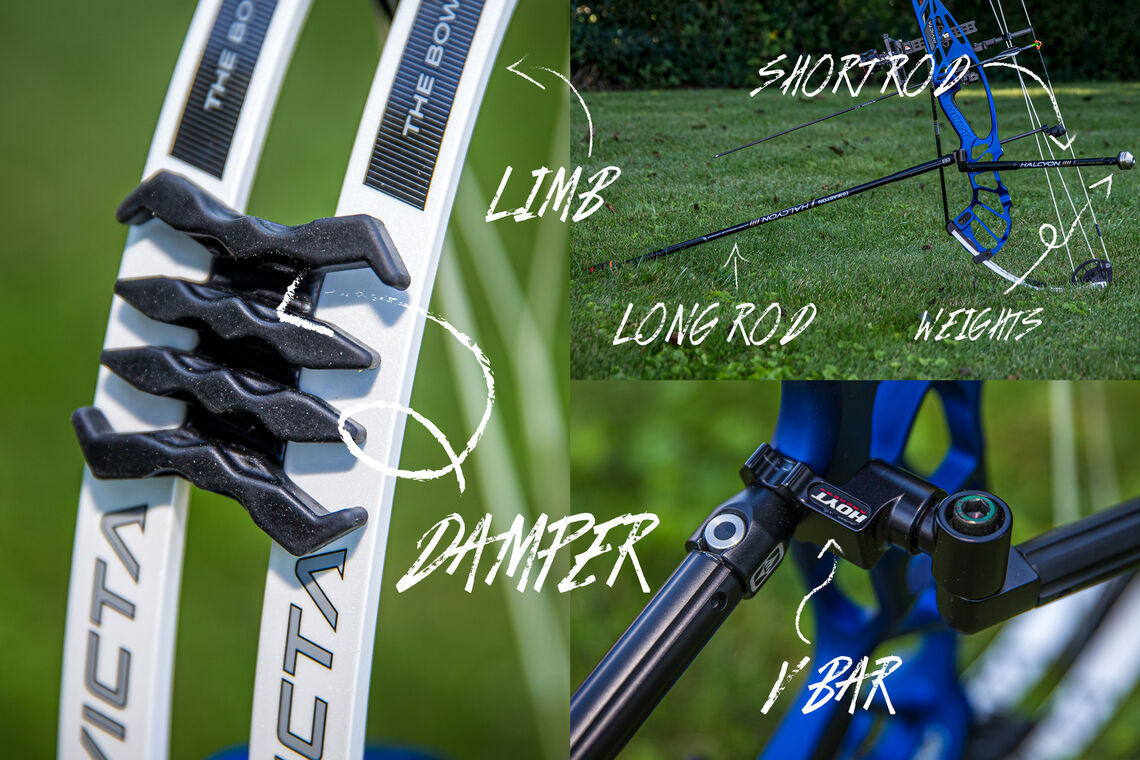
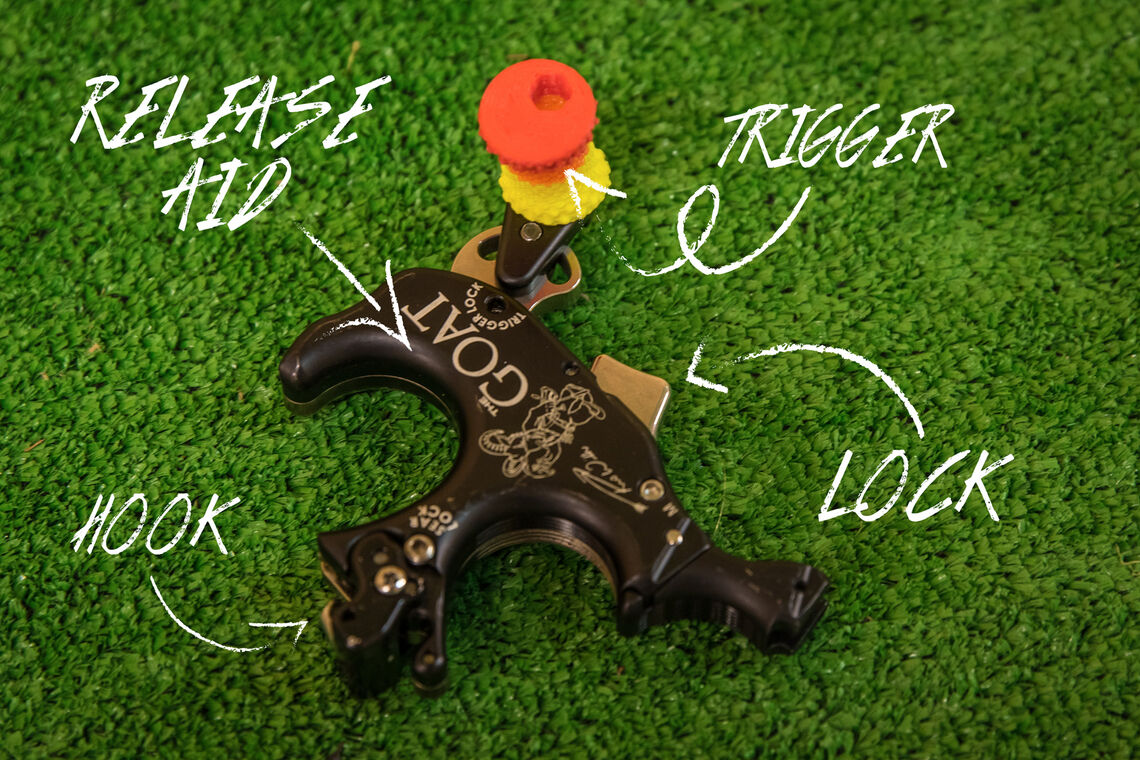
Equipment
The riser of a compound bow is the handle in the centre that acts as a base to which the limbs are connected. At the end of each limb are pulleys, usually eccentric and referred to as cams, which are connected by cables and the bow string. Cams have specific maximum draw weights, draw lengths and let-offs, which is the percentage of weight that is reduced when the bow is fully drawn.
The adjustable sight is also attached to the riser and holds a scope that contains a magnifying lens, usually of between two and eight power, a sight pin and a levelling bubble.
Stabilisers, including long rods that protrude from the front of the riser, and short rods that protrude to the sides or back usually finish with weights, are used primarily to balance the bow when the archer is aiming. Along with dampers, they also help reduce vibration when the arrow is released.
Arrows clip onto the bow string against a nocking point and usually inside a D-loop, which is a short arc of material that is used to connect to the release aid when drawing the bow. The arrow sits in the bow on top of the blade of an arrow rest.
Skill
Shooting a compound bow requires physical strength but, perhaps more importantly, control and mental fortitude. The process of aiming and cleanly executing while the sight pin is in the correct location is critical – and even more so in stressful conditions such as competing. While compound bows are decidedly more accurate than other styles of bow, elite compound archers must consistently achieve near perfection.
There are three distinct phases to the process of shooting a compound bow.
In the first phase, the archer must raise the bow and draw the bowstring to its mechanical stop. More force is required at the start of the draw process. The weight decreases the further the string is drawn, until it comes to a mechanical stop, which allows the archer to comfortably aim the bow for longer. In the second phase, the archer consciously aims their magnified sight. And, in the third, the archer executes the shot – either by consciously choosing to trigger their release aid, or by pulling the string and activating it subconsciously.
Consciously triggering the release is colloquially called ‘punching’, and the practice can lead to issues such as target panic, which is when the archer is unable to aim or execute properly due to a mental block. This and other psychological factors, particularly the ability to deal with competition stress, go a long way toward determining the success of a compound archer.
At international events, compound archers expect to achieve near perfection. Matches are often decided by just one or two points. The slightest mistake can be the difference between victory and defeat.
Competition
The compound bow is included on the programme of the World Games and Paralympic Games and, although it is not used at the Olympics, has been featured at the Asian, European, Pan American and Pacific Games.
It was first added to the World Archery Championships in 1995 and has been included – on equal footing with the recurve bow – in the Hyundai Archery World Cup since its launch in 2006.
Compound archers at international competitions in the target archery discipline shoot over a distance of 50 metres at a target face measuring 80 centimetres in diameter, although the four outer rings are usually removed, with a 10-ring measuring eight centimetres in diameter.
The qualification phase consists of 72 arrows, after which archers are ranked by their total score to determine the seeds for matchplay. The eliminations phase consists of head-to-head brackets in which the winner of each match advances and the loser is eliminated.
Matches are decided on cumulative score in which the goal is to have the highest number of points at the end of the regulation number of arrows. Individual matches last for 15 arrows, mixed team matches last for 16 arrows and team matches last for 24 arrows.
World Archery also recognises compound bows for other disciplines, including indoor, field, 3D and para archery.
Famous competitive compound archers include five-time Hyundai Archery World Cup Champion Sara Lopez of Colombia, US world-championship-winning father and son Dee and Reo Wilde, and Russia’s multiple world champion, Albina Loginova.